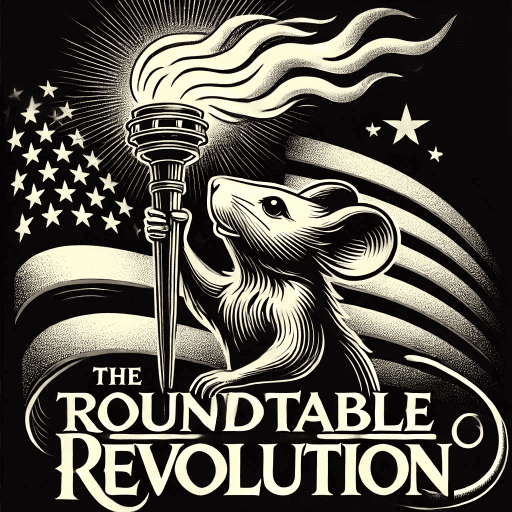Gun Reform: Balancing Rights with Responsibilities
Gun reform is one of the most complex and controversial issues facing our nation. It requires thoughtful consideration, grounded in the principles of the Second Amendment, historical context, and the responsibilities that come with firearm ownership. While protecting the right to bear arms is essential, we must address the evolving realities of gun violence and its far-reaching impacts on American society.
The Second Amendment in Historical Context
The Second Amendment was written at a time when firearms were single-shot muskets, requiring upwards of 60 seconds to load and fire a single round with limited accuracy. The framers of the Constitution could not have foreseen modern firearms, such as semi-automatic weapons and high-capacity magazines, which dramatically increase the potential for destruction.
The Constitution is a fluid document, designed to adapt to the needs of a changing society. Upholding the spirit of the Second Amendment does not mean ignoring its context or the advancements in technology that have transformed firearms since its writing.
Core Beliefs on Gun Reform
1. Rights Come with Responsibilities:
• The right to bear arms, like any right, comes with responsibilities. If you wish to own a weapon, there should be an acceptable reason for ownership, and that ownership must include safeguards to protect the public.
• Gun ownership should require a more thorough application and vetting process, including background checks, training, and accountability for the use and storage of firearms.
2. The Need for Thoughtful Regulation:
• The United States leads the developed world in gun violence, with rates that far exceed those of nations not in war zones. This growing issue demands comprehensive and balanced solutions.
• Regulations should reflect the realities of modern firearms while respecting the foundational rights of law-abiding citizens.
The Ripple Effects of Gun Violence
Gun violence is not an isolated issue—it has profound ripple effects on multiple sectors of society and governance, compounding other challenges America faces:
1. Links to International Crime:
• According to a 2016 report by the U.S. Government Accountability Office, approximately 70% of firearms seized in Mexico and traced from 2009 to 2014 originated in the United States. (gao.gov)
• This substantial flow of firearms from the U.S. to Mexico contributes to the arming of drug cartels, fueling violence and instability abroad.
• Implementing better regulation of firearm sales could reduce the flow of weapons into the hands of cartels, strengthening U.S. border security and international relations.
2. Urban Crime and Lax Gun Laws:
• Studies have shown that many firearms used in crimes within U.S. cities are sourced from states with more permissive gun laws. (bu.edu)
• A 2019 study from the University of Pennsylvania revealed that states with strict gun laws see an increase in homicides when they border states with lax ones, suggesting that firearms flow from less regulated to more regulated areas. (pennmedicine.org)
• This highlights the need for federal standards to complement state laws and address the movement of firearms across state lines.
3. Economic and Social Costs:
• Gun violence imposes a heavy burden on healthcare, law enforcement, and the justice system, diverting resources from other critical needs.
• It also exacerbates societal challenges such as poverty, mental health issues, and community instability, creating a cycle that is difficult to break.
A Collaborative Approach to Gun Reform
I want to make it clear that I do not personally own a firearm. However, I fully understand the significance of the Second Amendment and the cultural value it holds for many Americans. My goal is not to diminish this tradition but to ensure that it evolves responsibly in a way that protects both individual freedoms and public safety.
This movement seeks to bring together voices from across the spectrum—those who are:
• Passionate about their Second Amendment rights.
• Sympathetic to the realities of gun violence plaguing our nation.
• Advocates for honoring the spirit of the Constitution as a document designed to adapt and evolve with society.
We need thoughtful contributors to help craft a policy that balances the right to bear arms with the responsibility to protect others. By working together, we can preserve this foundational freedom while addressing the pressing need for reform.
Grandfather Clauses for Gradual Change
To ensure acceptance and fairness, this policy will include grandfather clauses. These provisions allow existing firearm owners to maintain their rights under current regulations while new policies are phased in over time.
• Grandfather clauses provide a transition period to help the public adapt to new standards without abrupt disruptions.
• This approach reflects an understanding that cultural and societal mindsets shift gradually, ensuring that changes are sustainable and equitable.
The specific details of these clauses will be developed collaboratively with experts and stakeholders to ensure they balance individual freedoms with public safety.
A Call for Comprehensive Reform
Gun reform must balance the right to bear arms with the responsibility to ensure public safety. This begins with:
• Federal Standards: Establishing nationwide regulations to close loopholes that allow firearms to flow from states with lax laws to areas with stricter controls.
• Enhanced Vetting: Implementing thorough background checks, licensing processes, and requirements for firearm training and safe storage.
• Accountability: Ensuring that firearm sellers, manufacturers, and owners are held accountable for their roles in the legal and illegal circulation of weapons.
Acknowledging the Challenges
This issue is deeply tied to American identity and culture, making it highly divisive. However, addressing it head-on with data-driven policies and a focus on responsibility and safety can create solutions that respect the rights of law-abiding gun owners while addressing the broader societal impacts of gun violence.
The Path Forward
Gun reform is not about removing rights or vilifying firearm owners—it’s about creating a safer, more sustainable system for future generations. By addressing the interconnected ripple effects of gun violence, we can strengthen communities, reduce crime, and reframe the Second Amendment to reflect modern realities while preserving its spirit.
Share! Pass it along! That’s how this works! Let it begin!

